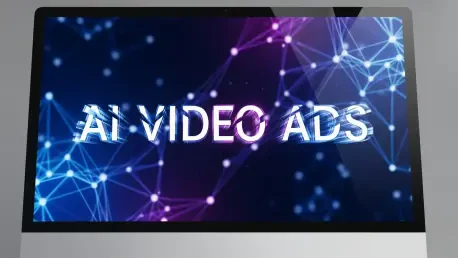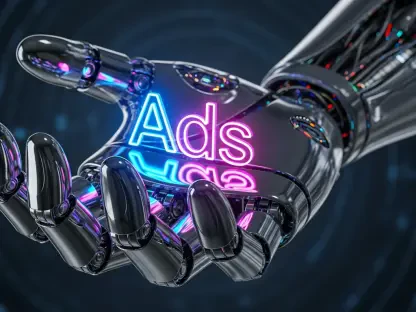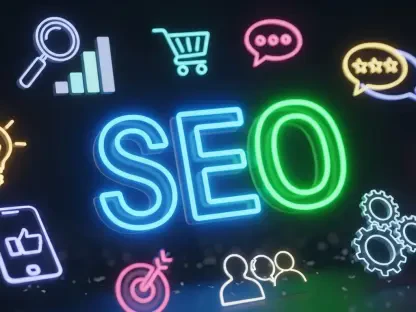The Rise of AI Video Ads in Modern Marketing
In today’s fast-paced digital marketplace, video advertising stands as a cornerstone of brand communication, capturing attention in ways static content often cannot, and the industry is undergoing a seismic shift with the integration of artificial intelligence. This transformation is redefining how ads are conceptualized and delivered. AI is not just a tool but a game-changer, enabling marketers to craft compelling narratives with unprecedented speed and precision, while meeting the growing consumer demand for relevance.
This technological leap offers significant advantages over traditional video production methods, primarily through cost reduction and enhanced creative freedom. Where conventional shoots often require hefty budgets for crews, equipment, and locations, AI-driven solutions can generate high-quality content at a fraction of the expense, allowing brands to experiment with diverse formats without financial strain. Platforms like Sora and tools such as Amazon’s AI Creative Studio are leading this charge, empowering businesses to produce visually stunning ads with minimal resources.
The digital marketing landscape continues to evolve, driven by a surge in demand for personalized, short-form content tailored to specific platforms. As consumers increasingly engage with bite-sized videos on social media, AI video ads are uniquely positioned to meet these expectations, delivering customized messages that resonate deeply. Key players in this space are setting the pace, pushing boundaries to redefine how brands connect with audiences in an ever-competitive environment.
Performance Powerhouse: How AI Video Ads Outshine Traditional Methods
Key Trends Driving AI Video Adoption
A notable trend propelling AI video ads into the spotlight is hyper-personalization, where content is tailored to individual preferences, demographics, and behaviors. This approach ensures that advertisements feel less intrusive and more like valuable interactions, aligning with consumer expectations for relevance. Additionally, the push for authenticity in marketing has gained traction, with audiences favoring genuine, relatable content over polished, corporate messaging.
Another driving force is the shift toward short-form, platform-native content, particularly on social media channels where attention spans are brief. AI technologies facilitate rapid content creation, allowing brands to capitalize on trending topics or cultural moments in real time, maintaining a dynamic presence. This responsiveness sets AI apart from traditional methods, which often lag due to lengthy production timelines.
Consumer behavior has also shifted, with a clear preference for context-aware advertisements that reflect personal interests or current events. Market drivers such as cost efficiency and the ability to scale personalization further fuel adoption, as businesses recognize the potential to reach wider audiences without escalating expenses. These trends collectively underscore why AI video ads are becoming indispensable in modern marketing strategies.
Data-Driven Success: Metrics and Projections
Empirical evidence highlights the superior performance of AI video ads over their traditional counterparts. A controlled study by SCIRP revealed that AI-generated ads achieved a click-through rate of 28%, nearly double the 15% recorded for conventional ads. Real-world case studies reinforce this, showing engagement rates soaring by 52% and conversion boosts of up to 20% for brands leveraging AI-driven content on platforms like TikTok and Meta.
Cost savings are equally compelling, with production expenses reduced by as much as 80% through AI tools, alongside a 31% lower cost-per-click on major social media channels. These metrics translate to tangible benefits, enhancing return on investment while minimizing user acquisition costs. For instance, brands using Amazon’s AI Creative Studio have reported click-through rate increases of around 40%, demonstrating the financial and strategic value of this technology.
Looking ahead, industry projections suggest a continued upward trajectory for AI video ad adoption over the next few years. As more companies integrate these tools, the focus will likely shift toward optimizing customer acquisition costs and refining personalization algorithms. This growth is expected to redefine performance benchmarks, positioning AI as a central pillar of advertising efficiency and effectiveness in the digital age.
Challenges in Implementing AI Video Ads
Despite the promise of AI video ads, technological hurdles remain a significant barrier to seamless adoption. Inconsistent visuals, such as fluctuating product designs or unnatural character movements, can undermine the credibility of campaigns. These issues often stem from the limitations of current AI models, which may struggle to maintain coherence across frames without meticulous oversight.
Market challenges compound these technical difficulties, with consumer skepticism toward AI-generated content posing a persistent concern. Many viewers can detect a lack of authenticity in poorly executed ads, leading to diminished trust in the brand. High-quality post-production becomes essential to bridge this gap, ensuring that the final output aligns with audience expectations for polished, professional content.
Solutions to these challenges lie in adopting hybrid approaches that combine human creativity with AI capabilities. By prioritizing strategic planning over full automation, brands can mitigate risks of inauthenticity while enhancing visual consistency. Investing in skilled editors and creative teams to refine AI-generated content is also critical, ensuring that technology serves as an enabler rather than a replacement for human insight.
Regulatory and Ethical Considerations in AI Video Advertising
Navigating the regulatory landscape is a crucial aspect of deploying AI video ads, as data privacy laws and transparency requirements shape industry practices. Governments and regulatory bodies worldwide are increasingly mandating clear disclosures for AI-generated content, ensuring consumers are informed about the nature of the advertisements they encounter. Compliance with these standards is non-negotiable for brands aiming to maintain public trust.
Ethical concerns further complicate the use of AI in advertising, particularly around authenticity and the potential for deceptive practices. Personalized ads, while effective, must avoid exploiting consumer data in ways that feel intrusive or manipulative. Striking a balance between customization and respect for privacy is paramount, as failure to do so can erode customer loyalty and invite backlash.
The impact of compliance extends beyond legal obligations, influencing how companies approach data security and content creation. Robust measures to protect user information are essential, as is transparency in labeling AI-generated ads. These practices not only align with regulatory demands but also foster a sense of accountability, reinforcing ethical standards in an industry undergoing rapid transformation.
The Future of AI Video Ads: A Customer-Centric Horizon
Emerging innovations in AI video advertising point to a future defined by even greater personalization and integration with social media platforms. Advanced algorithms are being developed to analyze user behavior in real time, enabling the creation of ads that adapt dynamically to individual preferences. This level of customization promises to elevate customer engagement by delivering content that feels uniquely relevant.
Potential disruptors, such as evolving platform algorithms and a growing consumer demand for authenticity, will shape the trajectory of AI video ads. Brands must remain agile, adapting to these changes to maintain relevance in a crowded digital space. The ability to produce authentic, platform-native content quickly will be a key differentiator, as audiences grow wary of overly automated or generic messaging.
Global digital adoption and economic conditions favoring cost-effective solutions are expected to drive significant growth in this sector. As businesses in diverse markets embrace AI tools, the focus will likely center on refining customer experience through agility and relevance. Predictions indicate that AI video ads will continue to transform advertising into a more interactive, responsive dialogue, setting new standards for how brands connect with their audiences.
Conclusion: Redefining Customer Experience with AI Video Ads
Reflecting on the insights gathered, it becomes evident that AI video ads surpass traditional methods in engagement, cost efficiency, and conversion rates, marking a pivotal shift in advertising dynamics. The deeper impact lies in how these tools transform customer experience, delivering personalized and responsive interactions that resonate on a profound level with audiences across platforms.
Moving forward, businesses are encouraged to adopt a human-led AI approach, prioritizing strategic creativity over mere automation to maximize impact. This balanced methodology promises to harness technology’s potential while preserving the authenticity that consumers value. Investing in skilled teams to guide AI processes emerges as a critical step for sustained success.
The potential for AI video ads to evolve advertising into a meaningful dialogue with customers stands out as a transformative opportunity. Brands that embrace this shift, focusing on listening and adapting through data-driven insights, position themselves to lead in a customer-centric future. This era of innovation demands not just adoption, but thoughtful integration to truly redefine connections with audiences.









